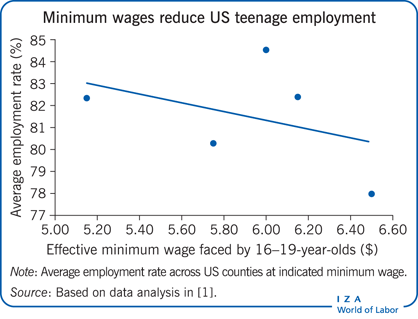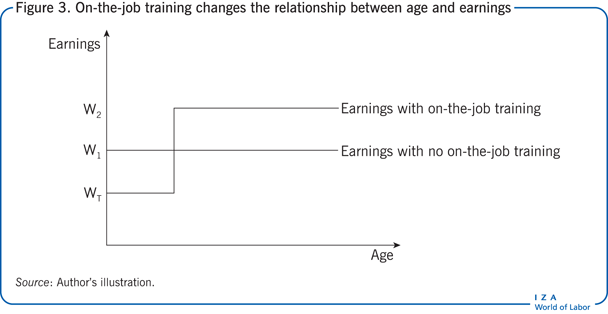Time for yet another study on the minimum wage, this time by economist Charlene Marie Kalenkoski from March of this year. Do minimum wage laws have negative effects on youth employment and income?
Wait for it…
…
Yes. Yes they do.

Kalenkoski writes,
Policymakers often propose a minimum wage as a means of raising incomes and lifting workers out of poverty. However, improvements in some young workers’ incomes as a result of a minimum wage come at a cost to others. Minimum wages reduce employment opportunities for youths and create unemployment. Workers miss out on on-the-job training opportunities that would have been paid for by reduced wages upfront but would have resulted in higher wages later. Youths who cannot find jobs must be supported by their families or by the social welfare system. Delayed entry into the labor market reduces the lifetime income stream of young unskilled workers (pg. 1).
A few selections on employment:
There is a substantial body of empirical evidence on the effects of a minimum wage on youth employment. Most of the studies have found negative effects on youth employment. A 1992 study of youth employment in the US found that a 10% increase in the minimum wage led to a 1–2% decline in the employment of teenagers and a 1.5–2% decline in the employment of young adults. A 2014 study of youth employment in the US showed a decline of 1.5% for teenagers. Thus, the estimated negative effect of minimum wages on employment in the US has been fairly consistent over time. However, these estimates are national averages, which obscure regional effects. A 10% increase in the minimum wage has been found to reduce regional employment by as much as 7%. One study that looked at teenage unemployment rates in the US instead of employment found that minimum wages indeed increase teen unemployment rates, as the standard economic model predicts (pg. 3).

And income:
How might the imposition of a minimum wage affect whether grocery store employers offer on-the-job training? If the minimum wage were set at W1 in Figure 3, for example, grocery store employers would be unable to offer on-the-job training to their grocery bagger employees. Workers would find themselves on the horizontal age-earnings profile at W1 and would thus earn less income over a lifetime than they might have had they been able to receive on-the-job training (pgs. 6-7).

Kalenkoski concludes,
Rather than using a minimum wage to increase youths’ current incomes, policymakers should consider policies that improve the labor market opportunities of youths but do not increase the cost to employers of hiring young workers. Policies that would achieve both goals include providing cash welfare payments to youth if their earned income falls below some guaranteed level and providing in-kind support, such as food or housing assistance. Such policies create their own distortions (for example, causing some benefit recipients to choose not to work) but would not reduce the total number of jobs available or create unemployment (pg. 9).
Check out the full publication.
Why doesn’t anyone ever say, “Get the government out of businesses and let them set their own wages” Supply and demand works wonders in weeding out unscrupulous employers.
I wonder if it would be possible/constitutional/legal to have a different minimum wage for minors…